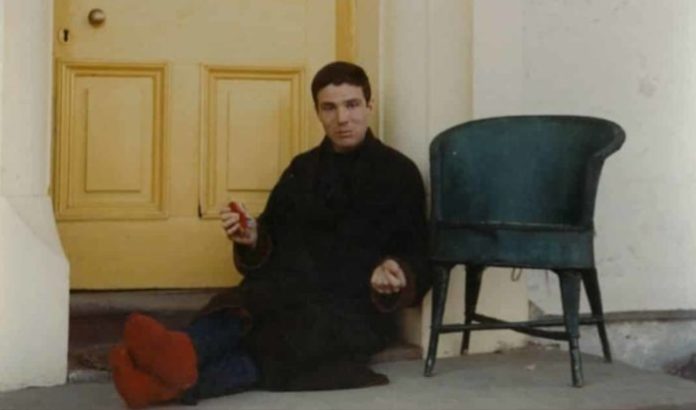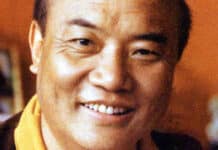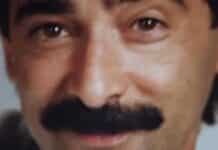
I find myself awake in the pre-dawn this morning suffused with thoughts and feelings about Kunga Dawa, Richard Arthure, the first Western, devoted heart-son of Chögyam Trungpa and now an almost unrecognized early bead in the still unfolding, intertwined mala of the lineages of the Trungpa, Kagyu-Nyingma and Shambhala…
I know Kunga as the first person I spoke to in the spring of 1970 when calling Tail of the Tiger (now Karme Choling) to explore a visit with my three roommates (Karl Springer, Chuck Lief and Arlo (now Alan) Schwartz). Thinking him Tibetan (by name provided in a letter of introduction from Samye Ling) I thought his English surprisingly good although hard to decipher (my first telephonic connection with someone from Oxford, UK). Upon meeting him face to face in Vermont some days soon after, I found him the one person among the rag tag band of settlers from Scotland that I could make sense of as a ‘spiritual’ person – soft spoken, soft humor, articulate and without any strong personality affectation. He was clearly the spiritual and meditative leader of the crew – Trungpa himself was not yet there, and if not for his thoughtful presence I at least would likely have fled, rather than decide to move in with my friends for the summer. During that short weekend, Kunga was my/our first instructor in meditation, leader of daily sing-song mantra chants, and thoughtful articulator/exponent of dharma.
It soon became clear (especially after moving in and meeting Chögyam Trungpa) that Kunga was the guru’s first (prime and close) student. Witnessing his quiet devotion and attentiveness, and Rinpoche’s intimate reliance on him to be the visible presence of what a ‘student’ might be, offered me a first glimpse of what a dharma and ear-whispered lineage could be about. That first summer Rinpoche offered seminars on two lineage focused streams of teaching – The Jewel Ornament of Liberation (Gampopa) and The 100,000 Songs of Milarepa. As mystifying as some of this was – describing an intensity of practice, austerity and devotion way beyond my comprehension, I ‘got it’ (or at least a bit of it), by seeing what lineage devotion and transmission looked like through the visible images of Kunga sitting and conversing quietly at his guru’s knee. He was (as I recall) not in any way showy or puffed up, but rather seemingly always ready to listen, receive and fulfill. He was kind to me as a complete novice, responding when I found voice for questions but not giving me the feeling that he ‘knew’ while I didn’t.
We also soon learned that it was Kunga who travelled with Rinpoche, most significantly as his attendant, secretary and scribe on his epochal journey back to India, Sikkim and Bhutan – and into retreat at the cave at Tagtsang where Padmasambhava himself meditated in order to subdue obstacles to presenting the buddhadharma in Tibet. It was in that retreat when the Sadhana of Mahamudra was revealed. He and Rinpoche co-created its English language version. As many will know The Sadhana reflected a turning point in his presentation of the buddhadharma. It arose at a moment when Rinpoche was amidst a turbulent point in his own life contemplating his readiness to break through obstacles, leave behind the safety of robes, and discover how to present the Buddhist teachings in the West.
The Sadhana was the first practice that the Vidyadhara encouraged his students to do and it was instructed and guided by Kunga. As strange as it seemed (with its vivid and unsettling images of what we learned was samsara and enlightened mandala) it still became a binding factor for our community and became for me and I know others a first window into the perils of spiritual materialism. To this day, it provokes and encourages me to sense the possibility of overcoming obstacles in my own and this era’s degraded self-centered tendencies. In short, Kunga was for me and some of my earliest lineage compadres the accessible person who helped us step through the threshold (words shared just a couple of days ago by my still dear friend Alan) into this ungraspable and twisty life path of dharma and lineage. I’m not suggesting he was a simple person – I never really thought I understood him and his mix of mischievousness, quiet charisma, and magnetism – I just knew that there were less worthy or compelling ways to be.
I cannot explain or frankly understand Kunga’s own life path since those early years. I know it had more than its own fair share of turbulence and challenge. I do not know the ins or outs of how and why he moved from the center towards the fringe (at least visibly) in our mandala. I do know that his fundamental devotion to his guru and lineage remained intact and that especially in recent years he was at least occasionally teaching, travelling and authoring beautiful poetry — and sharing some of his unique stories of time and connection at the feet of our guru. I also came to know him anew through the eyes of one of his son’s, Adam, who became a friend and mentee in Halifax – and who clearly loved him through thick and thin (both of them having plenty of both). I saw him only rarely in recent decades, when in Boulder and at some unanticipated intersection. Now that he has died I find myself holding some regret that I never thanked him directly for his offering of a doorway so important — not just for me — but for us, and for Rinpoche’s work and lineage.
I am somewhat surprised, on this day of his Sukhavati(s) that there is not an apparent big deal. I have not seen any statement from Shambhala, our lineage or our teachers, Karme Choling or Boulder Shambhala Center (except their few line announcement of the Sukhavati), but perhaps I am just out of the loop (here in central Mexico just now with Susanna). Even the Shambhala Forum has only a modest post and a few responses.
I hope that we do not forget how we got here (wherever that is) and how lineage actually works — from teacher to student to student to student — instruction, transmission, example, kindness and offering. We do talk about these principles, but don’t get to see them that often in simple action. My images of Kunga are a reminder that I hold dear, especially when I am snared by my own puffed up tendencies. I am so glad that in my life, such an offering was available to me at a moment when I was available for it.
Now the sun has arisen, and birds are symphonically chirping, opening a new day. Today Susanna and I will hold our little personal Sukhavati, and I suspect share a tear. I only hope that tear will in some unknown way be an offering towards producing future warriors. Goodbye and hello Kunga….
With a tender heart of appreciation,
Marty







